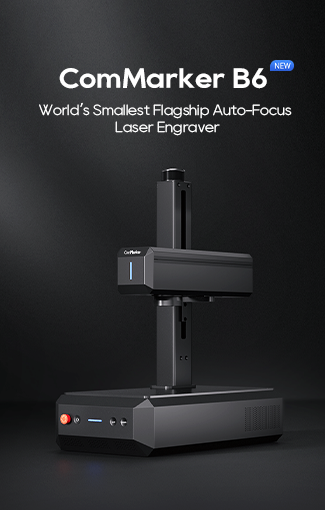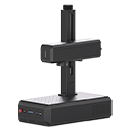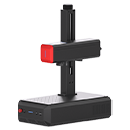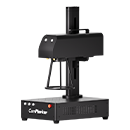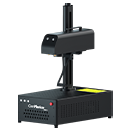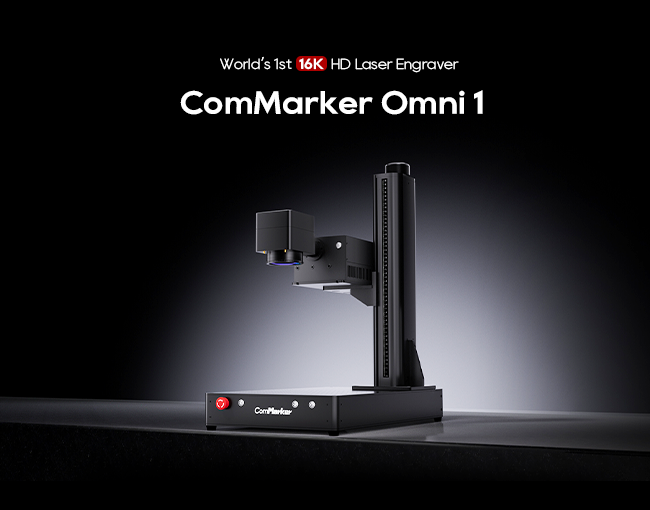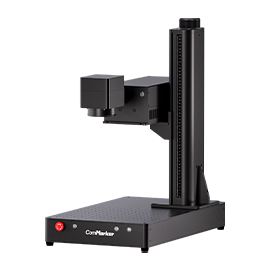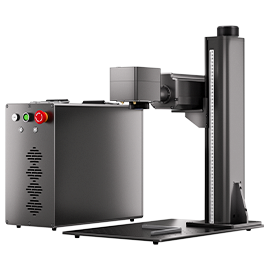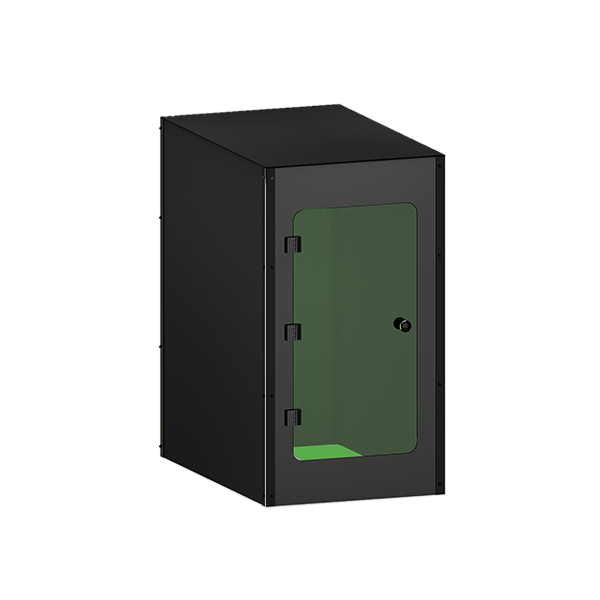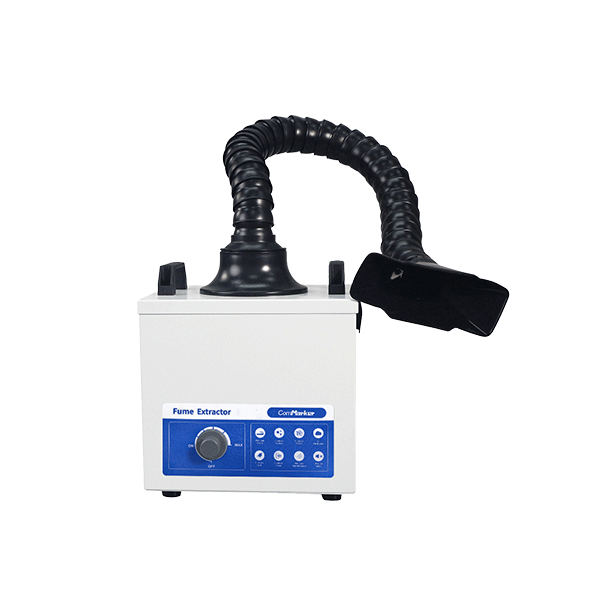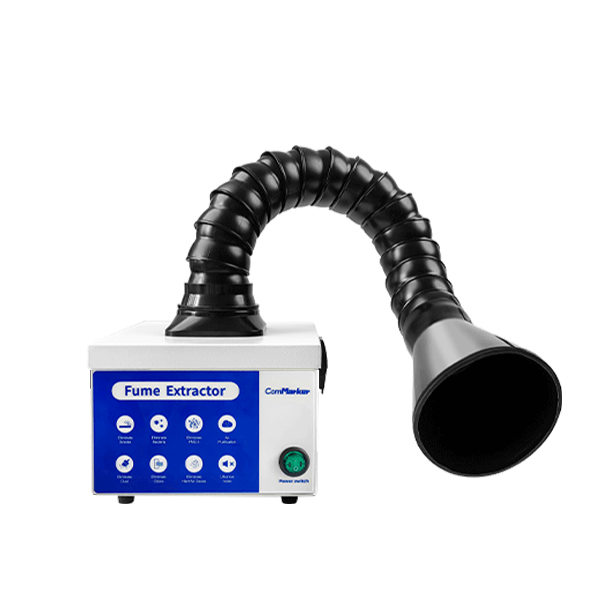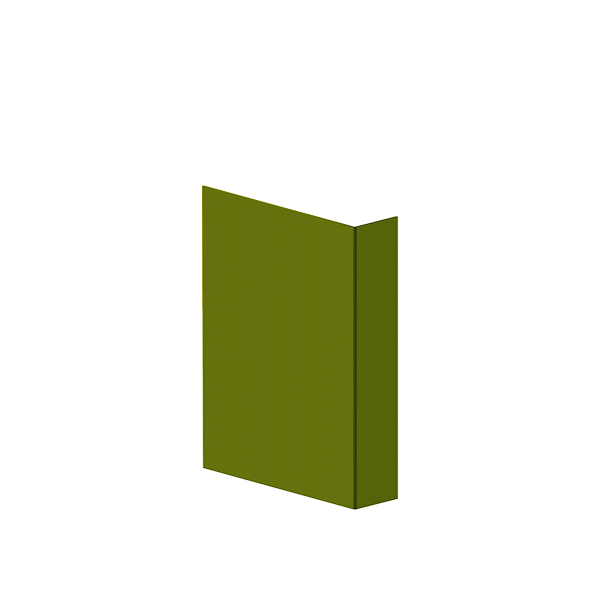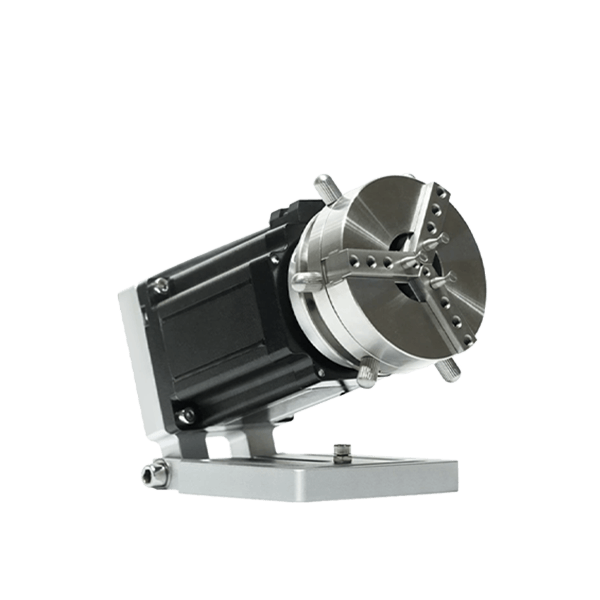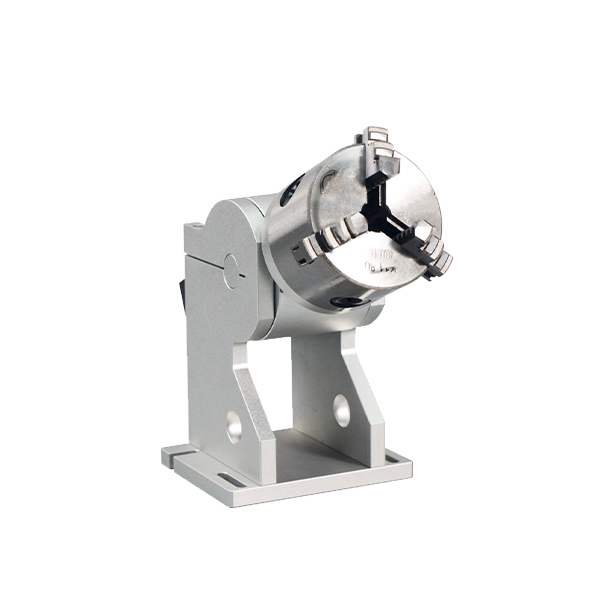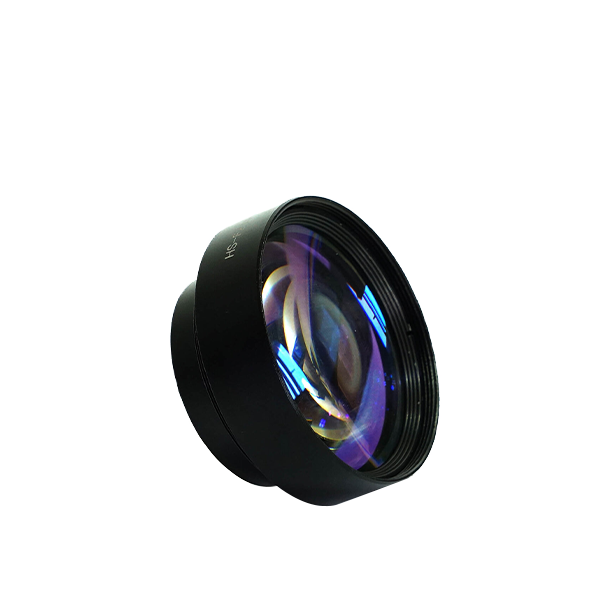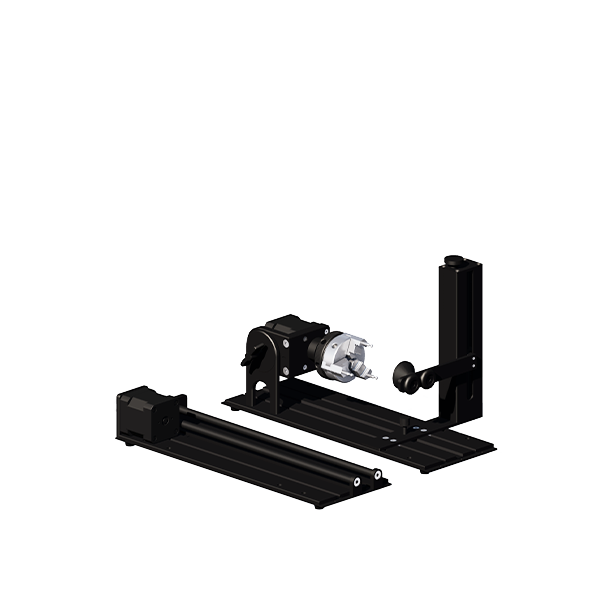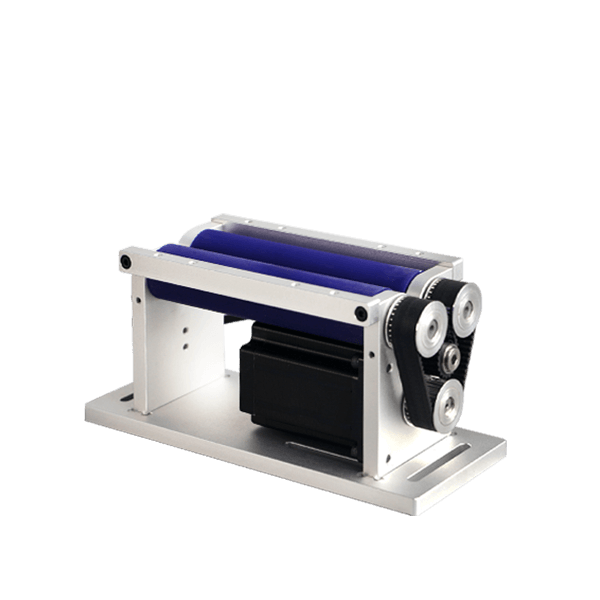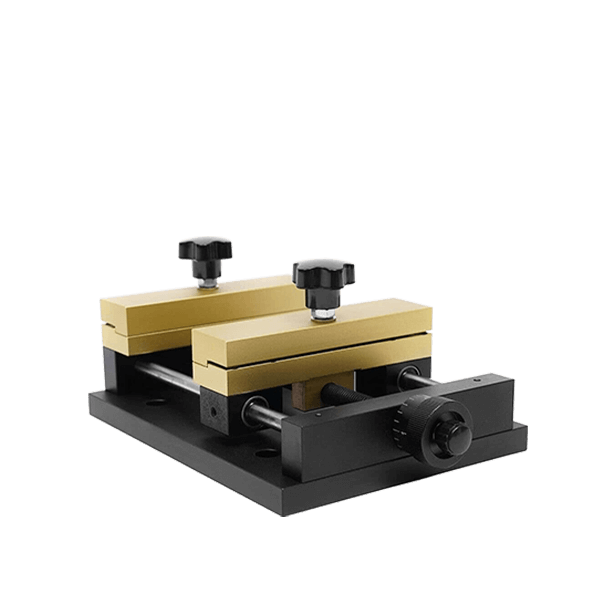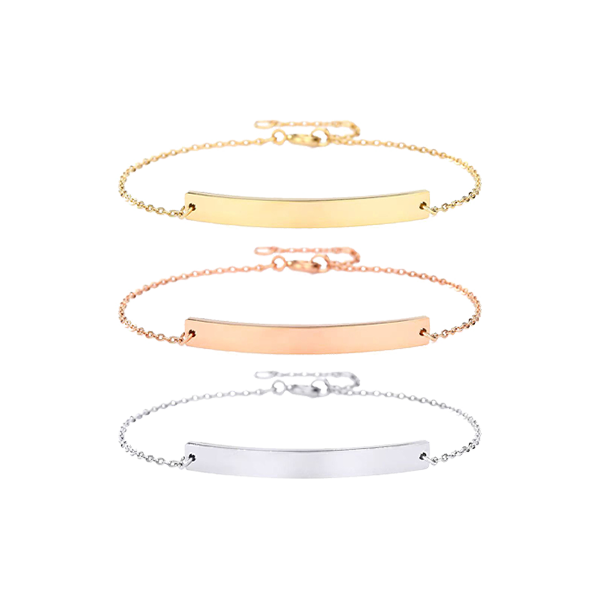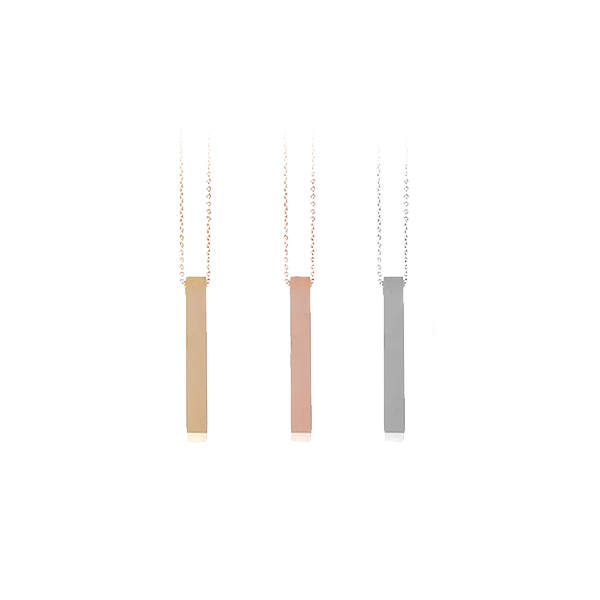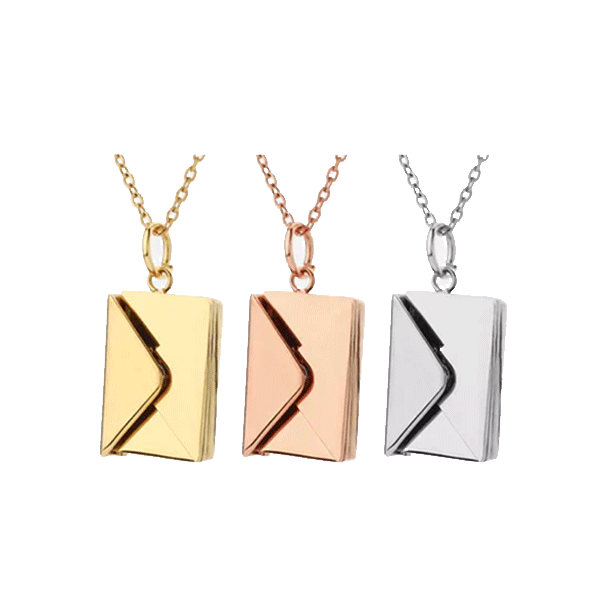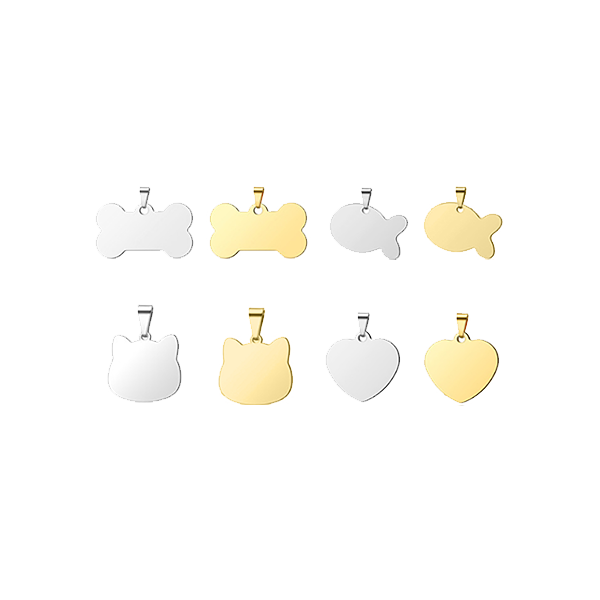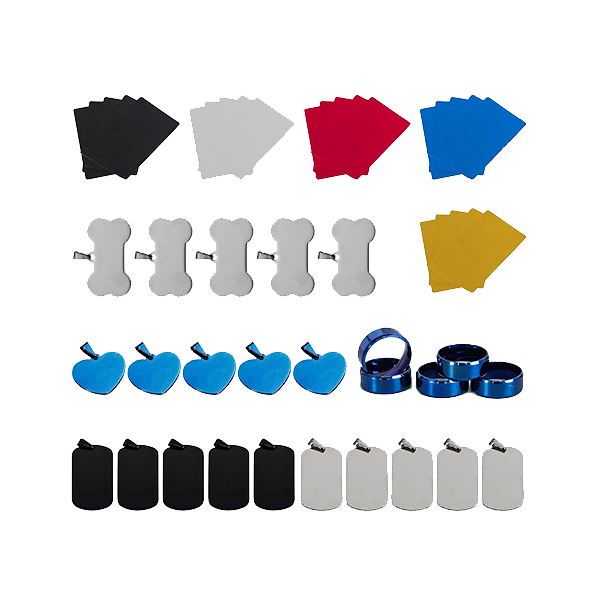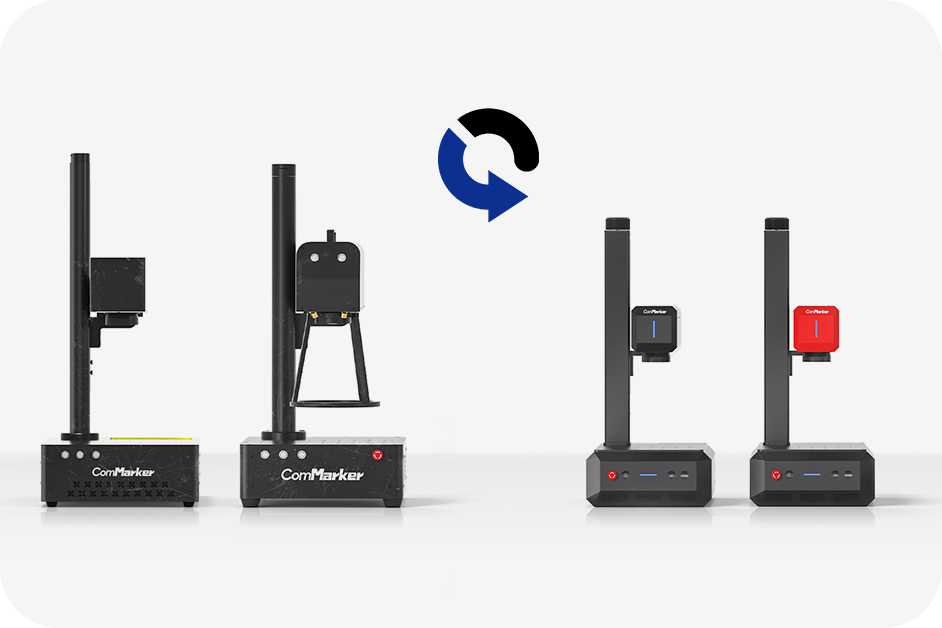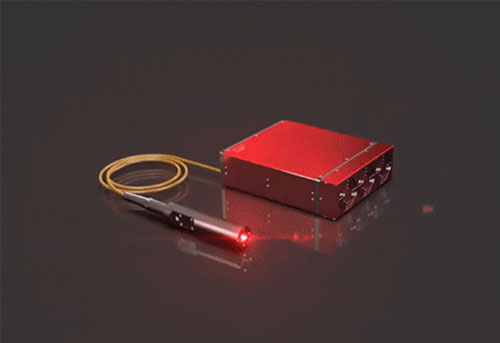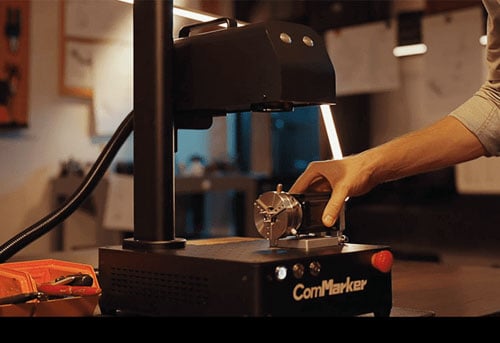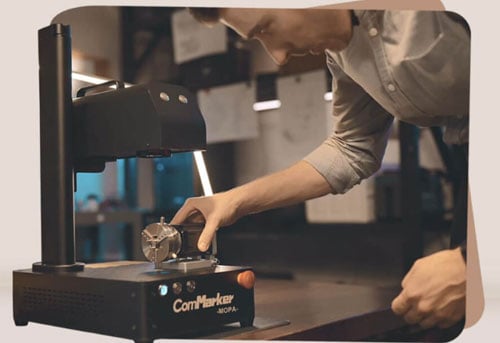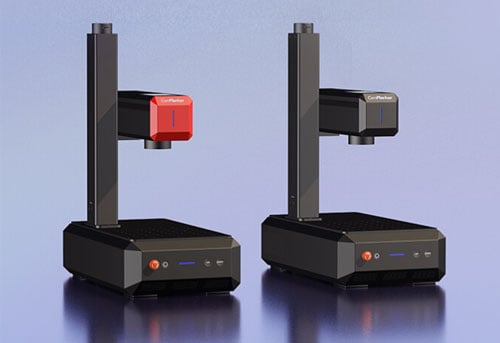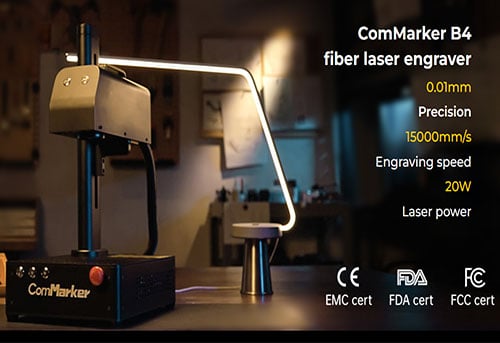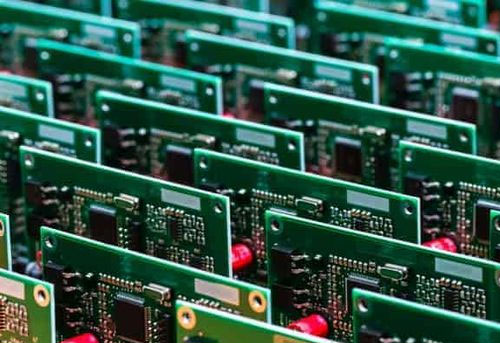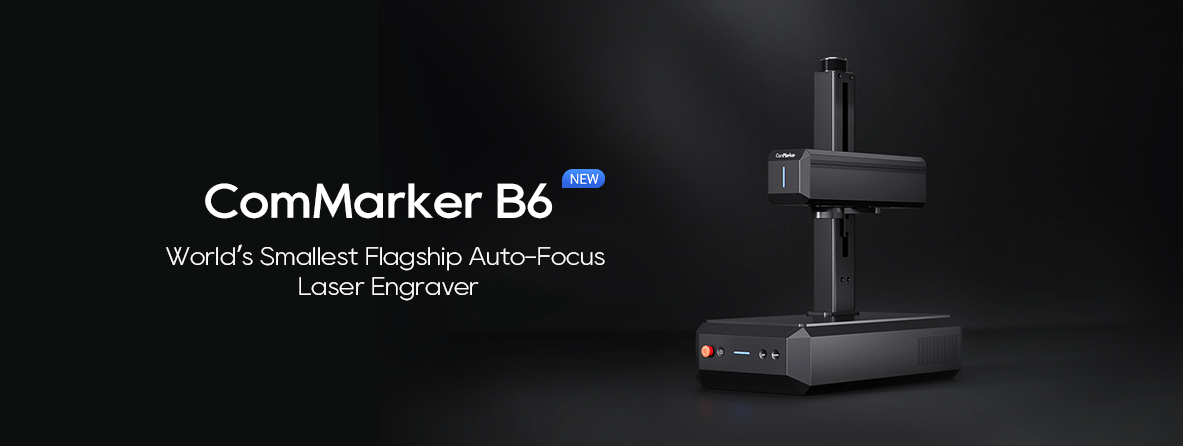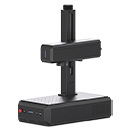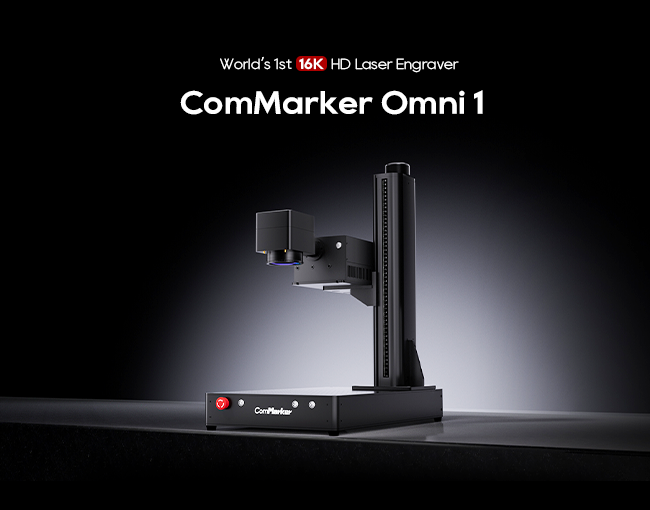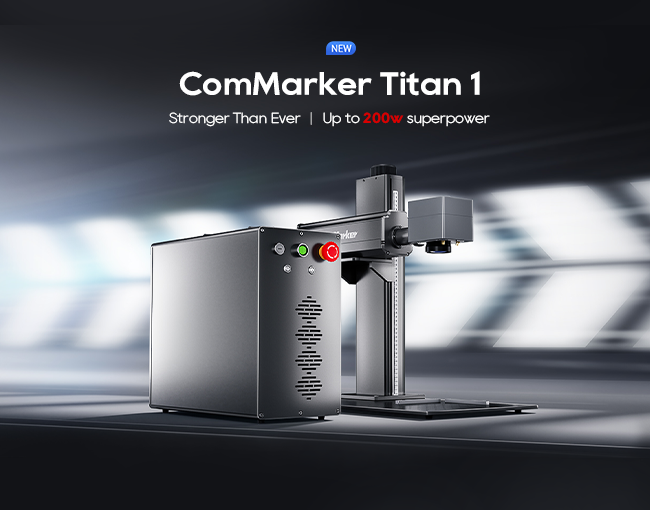Les lasers à fibre ont transformé le paysage industriel grâce à leur conception compacte, haute efficacité, and exceptional beam quality. These versatile lasers are essential in various fields, from metalworking to medical device manufacturing. This article explores the intricate workings of fiber lasers, particularly focusing on ComMarker’s technology, its advantages, and its applications.
Table des matières
What is a Fiber Laser?
A fiber laser is a type of solid-state laser that uses an optical fiber as its gain medium. The core of the optical fiber is doped with rare-earth elements such as ytterbium (Yb), which amplifies the laser light. These lasers are known for their high electrical and optical efficiency, compactness, and excellent beam quality.
The Gain Fiber Structure in a Fiber Laser
The gain fiber in a fiber laser is the central component where the laser light is amplified. The fiber’s core, doped with rare-earth elements like ytterbium (Yb), has the highest refractive index, allowing the laser light and pump light to propagate efficiently. The core is surrounded by inner and outer claddings, forming a double-clad fiber structure.
Figure 1: Gain Fiber Structure
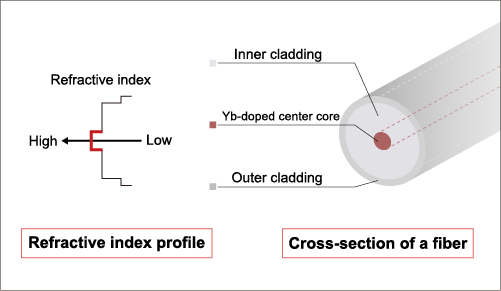
Laser Beam Propagation in a Double-Clad Fiber
In a double-clad fiber, the pump light propagates through the Yb-doped core and inner cladding. Total internal reflection at the boundary of the inner cladding and core confines the laser light within the core, ensuring efficient amplification.
Figure 2: Laser Beam Propagation in a Double-Clad Fiber
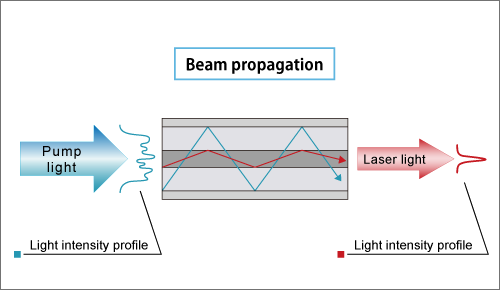
Optical Circuit Configuration in High-Power Fiber Lasers
High-power fiber lasers from ComMarker utilize a sophisticated optical circuit configuration divided into three main sections:
- Pump Section: Laser diodes (LDs) pump light through optical fibers into a pump combiner.
- Oscillator Section: The pump light propagates through a double-clad fiber, exciting the Yb ions, which amplify the light.
- Beam Delivery Section: The amplified laser light is delivered to the processing head or beam coupler.
Figure 3: Optical Circuit Configuration
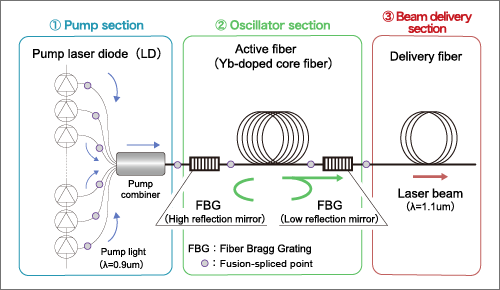
Power Enhancement of Fiber Lasers
Power enhancement in fiber lasers is achieved by coupling multiple delivery fibers with an output beam coupler. Par exemple, coupling four 1 kW output beams results in a 4 kW laser output, while coupling six 1 kW output beams yields 6 kW.
Figure 4: Power Enhancement of Fiber Lasers
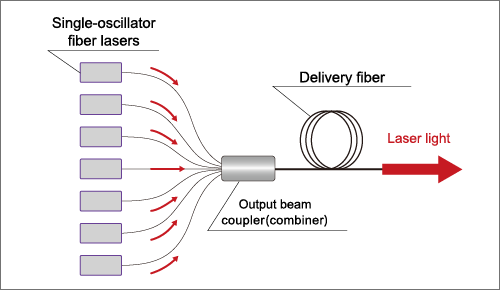
Avantages des lasers à fibre
Compared to traditional CO2 and YAG lasers, fiber lasers offer several significant advantages:
- Qualité du faisceau: Fiber lasers provide excellent beam quality, resulting in precise and clean cuts.
- Conception compacte: Their compact size and high power density save valuable space in industrial setups.
- Efficacité: They exhibit high electrical efficiency, reducing energy consumption and operational costs.
- Reliability: Fiber lasers are highly reliable, requiring minimal maintenance.
- Polyvalence: Suitable for various applications, including welding, Coupe, et marquage, across multiple industries.
Applications of Fiber Lasers
Fiber lasers are versatile tools used in numerous industrial processes. Their applications include:
- Traitement des matériaux: Coupe, soudage, marquage, and drilling metals and other materials.
- Medical Device Manufacturing: Precision cutting and engraving of medical devices.
- Télécommunications: Fiber lasers play a crucial role in telecommunications for signal amplification and transmission.
- Defense: Utilized in directed energy weapons and other defense-related applications.
- Research and Development: Fiber lasers are used in spectroscopy and other scientific research areas.
Types de lasers à fibre
Fiber lasers can be classified based on their operational modes and applications:
- Continuous Wave (CW) Lasers à fibre: Produce a continuous laser beam, ideal for high-power industrial applications.
- Pulsed Fiber Lasers: Emit laser pulses at regular intervals, suitable for precise engraving and marking.
- QCW Fiber Lasers: Offer high peak power and lower average power, perfect for applications like spot welding and drilling.
Comment fonctionne un laser à fibre?
Fiber lasers operate by using an optical fiber doped with rare-earth elements, such as ytterbium (Yb). The doped fiber core absorbs pump light, which excites the Yb ions, leading to the emission of laser light. The laser light is confined within the core through total internal reflection, resulting in a high-quality laser beam.
Entretien et durée de vie
One of the key benefits of fiber lasers is their low maintenance requirements. Its lifespan is100,000 heures. Reaching its lifespan doesn’t mean it is totally unusable, mais il ne décroît qu'en puissance laser. un service de remplacement de source laser (le prix dépendra de la source laser que vous choisirez).
Graveur laser fibre ComMarker B4 20W
Levage électrique: Le ComMarker B4-20W dispose d'un, moteur de levage caché. 3D Gaufrage et gravure profonde: La machine de gravure laser B4-20W gère les tâches complexes, gravure 3D multi-niveaux et gravure profonde sur métal et roche. Espace de travail spacieux: 110Objectifs doubles mm et 200 mm, zone de marquage avec deux localisateurs de points rouges pour un calibrage et une mise au point précis. Large compatibilité: Graver…




